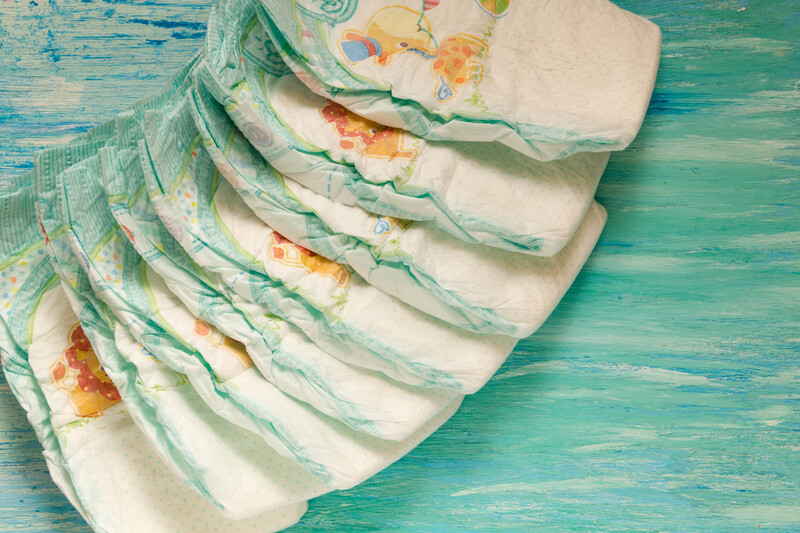Transforming PPE Waste Disposal Into a Community Effort
Over the past few years, personal protective equipment (PPE) has become a staple of daily life, especially during the COVID-19 pandemic. However, the increased use of masks, gloves, face shields, and gowns has led to a dramatic rise in PPE waste. Improper disposal threatens our environment, wildlife, and community health. To tackle this mounting issue, it's crucial to shift our mindset and transform PPE waste disposal into a community-driven effort.
Can our communities come together to create cleaner, healthier, and more sustainable places to live -- all by managing PPE waste responsibly? Absolutely. In this comprehensive guide, we'll explore the significance of collective action, innovative strategies, examples of successful frameworks, and practical steps for millions to contribute to better PPE waste management.

Understanding the Scope of PPE Waste in Our Communities
The pandemic's legacy includes billions of disposable face masks, gloves, and aprons. According to estimates, 129 billion face masks and 65 billion gloves were used globally each month during the pandemic's peak. Despite their life-saving benefits, these single-use items are now a burgeoning waste problem.
What Constitutes PPE Waste?
- Disposable face masks (surgical, N95, fabric)
- Plastic gloves (latex, nitrile, vinyl)
- Protective gowns and aprons
- Face shields and goggles
- Single-use shoe covers, hairnets, and related accessories
PPE waste is primarily made from non-biodegradable materials like polypropylene, rubber, and polycarbonate. Improper disposal (e.g., littering, open burning) can contaminate water sources, clog drainage systems, and harm wildlife. PPE litter on sidewalks and in waterways threatens both urban and rural environments.
Why Community Participation Matters for PPE Waste Management
Individual actions matter, but the scale of PPE waste requires greater collaboration. Community-driven initiatives foster shared responsibility, awareness, and the collective power needed to address this pressing issue. By transforming PPE waste disposal into a community effort, neighborhoods, schools, organizations, and local governments can:
- Reduce environmental pollution
- Promote safe and sanitary communities
- Encourage sustainable habits and recycling
- Support circular economy principles
- Inspire other communities to adopt similar practices
Key Benefits of Community-Based PPE Waste Solutions
- Increased Engagement: Residents feel empowered and more likely to follow best disposal practices.
- Education and Awareness: Community efforts facilitate learning about sustainable PPE disposal.
- Resource Optimization: Shared bins, collection points, and coordinated transport reduce costs and duplication.
- Innovation: Local groups often drive new ideas such as upcycling, art projects, or compostable PPE alternatives.
Innovative Strategies for PPE Waste Disposal as a Community Initiative
1. Community PPE Collection Drives
Organizing regular PPE collection events can drastically reduce littering. For example:
- Set up safe drop-off bins at schools, parks, and supermarkets.
- Host monthly "Clean Up Our Streets" days focused on PPE-related trash.
- Offer participation incentives such as community service credits, discounts, or public recognition.
2. Localized PPE Waste Bins and Signage
Standard trash bins aren't always suitable because PPE may be biohazardous. Communities can invest in clearly marked, dedicated bins for PPE disposal, reinforced by educational posters and signs that explain the importance of correct practices.
3. Collaboration with Waste Management Services
Partnering with municipal waste companies or recyclers can ensure that collected PPE is disposed of or processed safely. For example:
- Cities can issue separate collection routes for PPE bins.
- Work with specialized disposal vendors who sterilize and recycle certain PPE items.
4. School and Youth Education Programs
Children and young adults are powerful agents of change. Schools can integrate lessons on PPE waste reduction into science or civic studies, conduct art competitions using upcycled PPE, and involve students in community clean-ups.
5. PPE Upcycling and Creative Reuse
Uncontaminated PPE items can sometimes be reimagined. Community art projects, such as colorful mask sculptures or recycled fashion shows, can raise awareness while reducing landfill burden.
6. Support for Compostable and Recyclable PPE
Communities can advocate for and source sustainable PPE alternatives, such as compostable face masks made from plant fibers. Awareness campaigns help residents make informed choices, supplementing efforts to keep single-use plastics out of the environment.
Action Plan: How to Transform PPE Waste Disposal in Your Community
-
Conduct a Community Assessment
Survey local schools, businesses, and residents on current PPE usage and disposal habits. Map litter hotspots. -
Engage Stakeholders
Form a committee of local leaders, waste experts, teachers, and youth representatives to plan and coordinate. -
Secure Resources and Funding
Apply for municipal grants, partner with eco-focused NGOs, or crowdsource funding for bins, signage, and collection services. -
Set Up PPE Disposal Infrastructure
Install dedicated, color-coded PPE bins in high-traffic areas. Ensure regular collection by trained personnel. -
Educate and Communicate
Launch an information campaign using social media, flyers, and school workshops to spread best practices. -
Monitor, Evaluate and Improve
Track success through regular clean-up events and surveys. Adjust strategies based on community feedback. -
Reward and Celebrate Participation
Host recognition events, give certificates, and highlight positive changes in local media outlets.
Inspiring Examples: Community PPE Waste Programs in Action
Mask Recycling Initiatives
Several communities across Europe and Asia have launched mask recycling programs in partnership with recycling companies. For instance, in France, the "Plaxtil" project recycles used masks into plastic pellets for manufacturing rulers, coat hooks, and even street furniture.
Beach and Park PPE Clean-ups
Environmental organizations and local councils frequently organize PPE-themed clean-up days, equipping volunteers with gloves and trash bags to remove litter from beaches or urban parks. These efforts raise visibility about the scale of the problem and forge stronger community bonds.
Local Business Partnerships
Supermarkets and pharmacies have begun offering in-store PPE recycling bins. Some businesses sponsor collection drives or offer discounts for customers who participate in proper PPE disposal initiatives.
How Technology is Aiding Community PPE Waste Solutions
Smart PPE Bins
Recent innovations include smart, touch-free PPE bins equipped with sensors that notify collection teams when the bins are full, ensuring timely removal and minimal risk to sanitation workers.
Tracking and Reporting Tools
Community members can use mobile apps to report hotspots for PPE litter or illegal dumping, supporting swift community clean-up actions and data-driven policy improvements.
Challenges and Solutions in Community PPE Waste Disposal
-
Lack of Awareness:
Many people don't realize PPE is non-biodegradable or the proper disposal methods. Solution: Step up community education and visible signage. -
Contamination Risks:
Collection of potentially contaminated PPE scares volunteers. Solution: Provide protective gear and professional guidance to all participants. -
Cost Barriers:
Dedicated PPE bins and separate transport can be expensive. Solution: Tap into grants, public-private partnerships, and volunteer programs. -
Resistance to Change:
Changing disposal habits takes time. Solution: Celebrate early adopters and show tangible local results.

How Individuals Can Contribute to the Community Effort
- Always dispose of masks and gloves in marked bins--never in the street or regular recycling.
- Join local clean-ups and PPE waste drives.
- Spread awareness on social media about the importance of collective PPE waste management.
- Encourage schools, workplaces, and neighborhoods to join or launch PPE waste reduction programs.
Conclusion: Building a Sustainable Future Starts with Us
The rapid rise of PPE waste presents unique environmental and public health challenges--but also offers an unprecedented opportunity for community-driven transformation. By innovating together and treating PPE waste disposal as a collective responsibility, we build cleaner neighborhoods, teach sustainability, and protect future generations.
Together, we can shift the narrative from problem to progress--making PPE waste management not just a necessity, but an inspiring example of what united communities can achieve for the planet.
Let's Keep Our Communities Safe, Clean, and Sustainable--One Mask at a Time!
Are you ready to start your own community PPE waste disposal initiative? Share this guide, gather your neighbors, and lead the way to a cleaner world.
